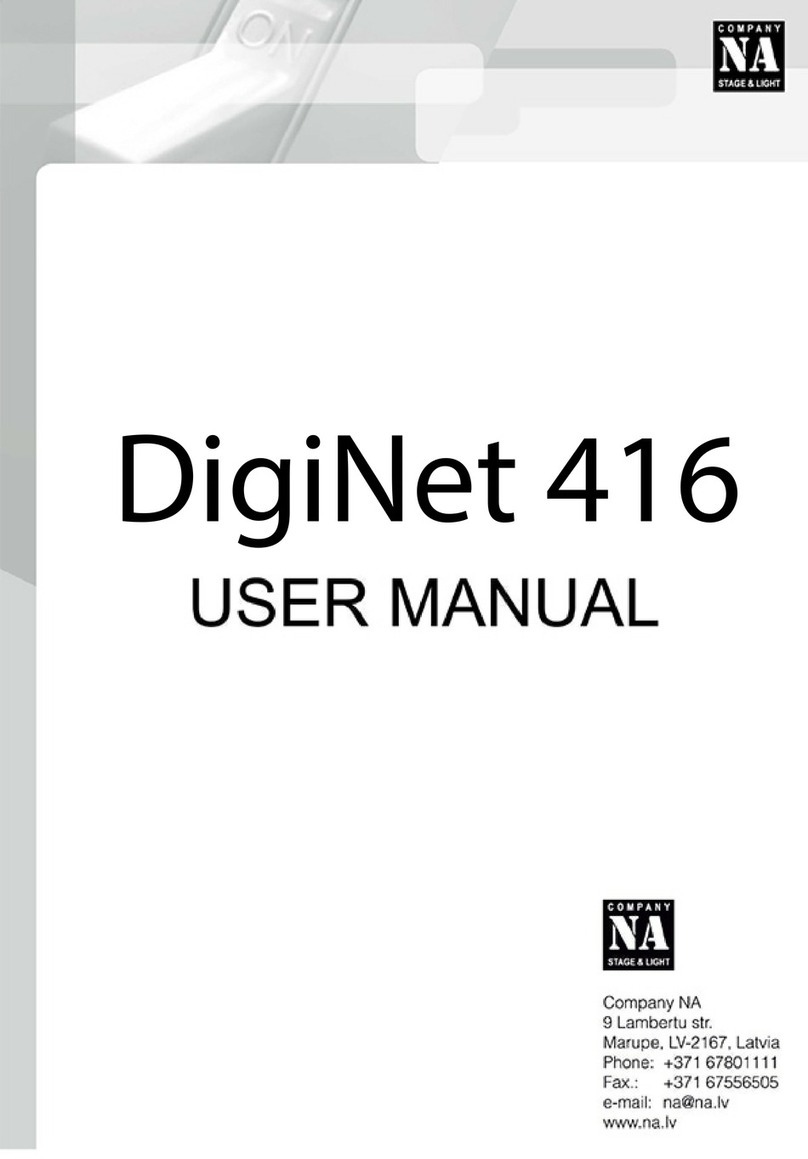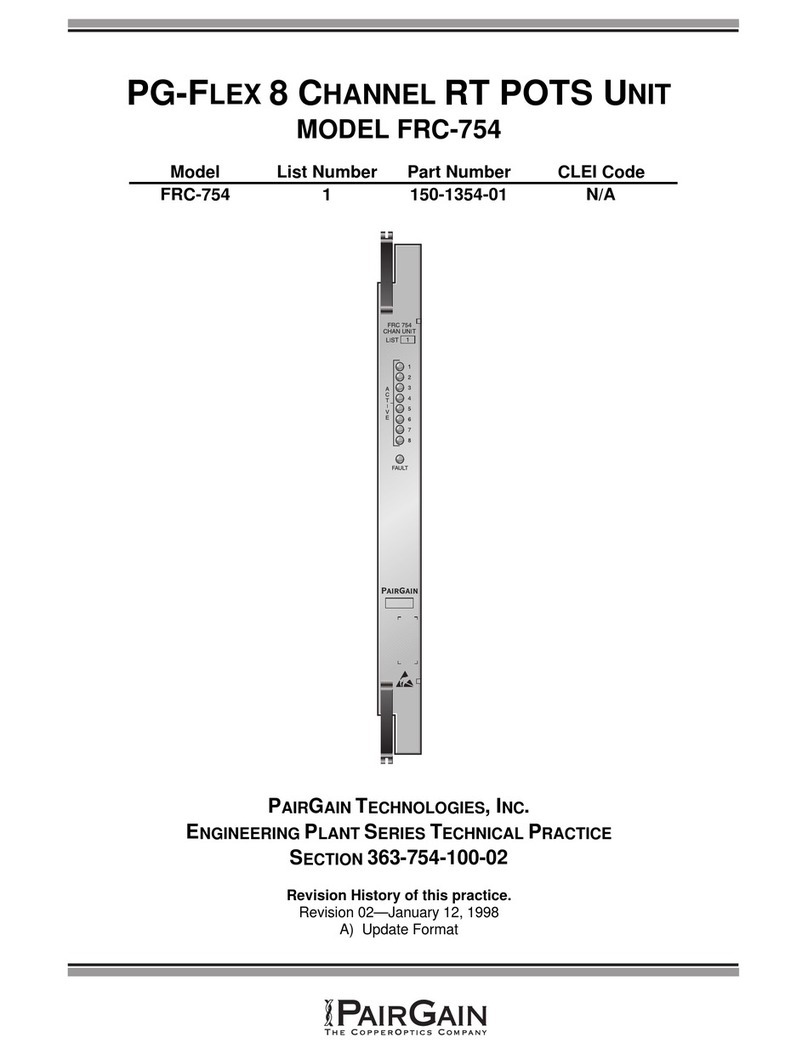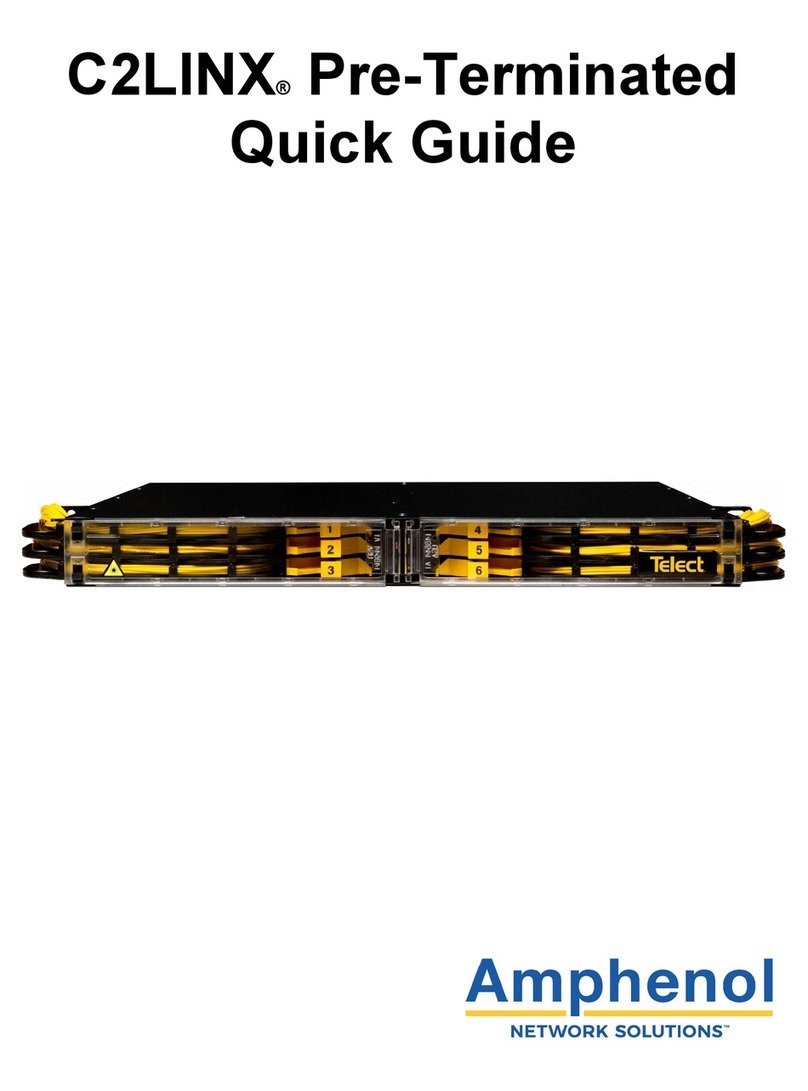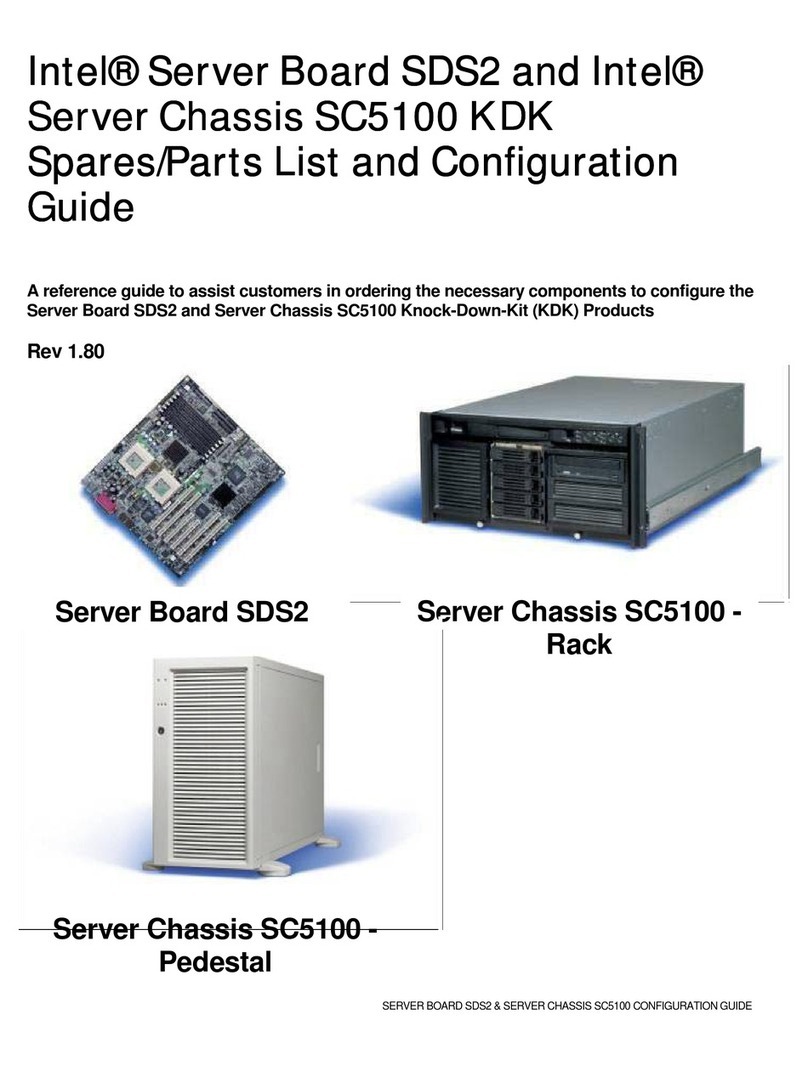FIBERROAD FR8000 Operating manual

1 / 18
Fiberroad may make changes at any time to the products or specifications contained herein without notice
Fiberroad is trademarks of Fiberroad technology Co.,Ltd.©2021 Fiberroad technologu co.,ltd All right reserved
FR8000
Optical Line System
Maintenance Guide
Release 1.0.0

2 / 18
Fiberroad may make changes at any time to the products or specifications contained herein without notice
Fiberroad is trademarks of Fiberroad technology Co.,Ltd.©2021 Fiberroad technologu co.,ltd All right reserved
Copyright©2021 Fiberroad Technology Co., Ltd. All rights reserved. No part of this publication
may be reproduced, stored in a retrieval system or transmitted in any form, be it electronically,
mechanically, or by any other means such as photocopying, recording or otherwise, without the
prior written permission of Fiberroad Technology Co., Ltd. (Fiberroad)
Information provided by Fiberroad is believed to be accurate and reliable. However, no
responsibility is assumed by Fiberroad for its use nor for any infringements of patents or other
rights of third parties that may result from its use. No license is granted by implication or
otherwise under any patent rights of Fiberroad.
The information contained in this publication is subject to change without notice.
Trademarks
Fiberroad’s trademarks have been identified as such. However, the presence or absence of such
identification does not affect the legal status of any brand.
Units of Measurement
Units of measurement in this publication conform to SI standards and practices.
May 01, 2021
Version number: 1.0.0

3 / 18
Fiberroad may make changes at any time to the products or specifications contained herein without notice
Fiberroad is trademarks of Fiberroad technology Co.,Ltd.©2021 Fiberroad technologu co.,ltd All right reserved
Contents
Revision History ........................................................................................................ 4
Warning ...................................................................................................................... 5
About This Guide ...................................................................................................... 7
1 Rountines Maintenance ................................................................................. 9
Rountines Maintenance Tasks .............................................................................. 9
Daily Maintenance Tasks................................................................................... 9
Checking Performance Events ........................................................................... 11
2 Performance Descriptions ........................................................................12
Performance Parameters .................................................................................... 12
3 Troubleshooting Procedures and Principles ........................................13
Maintenance Requirements .............................................................................. 13
Classification of Faults...................................................................................... 14
4 Troubleshooting .........................................................................................16
LED Problems and Countermeasures .............................................................. 16
Console Problem & Countermeasure ........................................................ 17
SNMP Manager Problem and Countermeasures ................................... 17
TELNET Problem & Countermeasures ............................................................ 18

4 / 18
Fiberroad may make changes at any time to the products or specifications contained herein without notice
Fiberroad is trademarks of Fiberroad technology Co.,Ltd.©2021 Fiberroad technologu co.,ltd All right reserved
Revision History
Version Date Author Reasons of Change Section(s)
Affected
1.0 2021/11/01 Initial Release All

5 / 18
Fiberroad may make changes at any time to the products or specifications contained herein without notice
Fiberroad is trademarks of Fiberroad technology Co.,Ltd.©2021 Fiberroad technologu co.,ltd All right reserved
Warning!
Please don’t open the cover
Opening the cover of this equipment is absolutely forbidden.
This has an electric shock hazard. Besides, this is a factor that may cause faults.
Please don’t use when the equipment is abnormal
In case of abnormal conditions like fume, peculiar smell, strange sounds, etc., please stop
using the equipment lest that fire or electric shock occurs. Please switch it off immediately, and
then ask the sale shop or sale site from which you purchased it for repair after the smoke surely
disappears. Never repair it by yourself, lest that hazard occurs.
When using AC power: please pull out the power plug from socket.
When using DC power: please remove the power cable from junction board.
Please don’t damage the power wires
Please don’t scratch, damage or stretch the power wires, otherwise the power wires may
break and cause hazards of fire or electric shock.
Plug in the plug properly
When using AC power, the power plug should be fully inserted. Besides, please don’t use
loose socket to avoid bad contact. Otherwise fire or electric shock may occur.
The power wires should be firmly connected with junction board
When using DC power, the power wires should be firmly connected with junction board. As
long as the [0V], [-48V] and [FG] junctions are contacted, not only the internal power of the
equipment will fail, but also fire or electric shock may occur.
Hold the plug when plugging it in/out
When plugging in or pulling out the power wires, please make sure to hold the plug with
your hand. Stretching the wires parts may damage them and cause electric shock or fire.
Please don’t touch the plug/junction board with wet hand
Please don’t touch the power plug or connect the junctions with wet hand. Otherwise
electric shock may occur.
Plug/junction board cleaning
Please make sure that the plug and junction board are not covered with dust before you connect
them. If they are covered with dust, fire or electric shock may occur.
Please don’t touch the equipment in thunder

6 / 18
Fiberroad may make changes at any time to the products or specifications contained herein without notice
Fiberroad is trademarks of Fiberroad technology Co.,Ltd.©2021 Fiberroad technologu co.,ltd All right reserved
When thundering please don’t perform connection tasks of communication cables and don’t
touch the equipment. Touching the equipment in thunder may cause electric shock.
Don’t interfere with ventilation
The vents are designed lest that the internal temperature increases. Please don’t place the
equipment at unventilated positions or place objects on or near the vents, otherwise its internal
temperature may increase and cause fire or faults.
Please don’t place objects on the soft power wires
Please don’t place objects on the power wires. The breakage of it may cause fire or electric
shock.
Pull out the soft power wires from socket in case of damage
When the soft power wires are damaged, please switch the power off immediately and ask
the sale shop or sale site from which you purchased it for repair. Letting it alone may cause fire
or electric shock.
Pull it out from the socket in case of damage
In case the host is dropped or damaged, please switch the power off immediately and ask
the sale shop or sale site from which you purchased it for repair. Letting it alone may cause fire
or electric shock.
Please don’t place it at unstable sites
Please don’t place the equipment at rocky, declining or unstable sites. Otherwise it may be
damaged by dropping or overturn.
Please don’t place it at the sites with abominable environment
Placing the equipment at the following sites will shorten the life of it and thereby cause
faults. Please conserve it properly. Don’t place it at the following sites.
Very damp or dusty sites
Sites that generate lampblack or corrosive gases
Continuously vibrated sites
Sites under direct sunlight
High-temperature sites near ovens or other hot apparatus
Please don’t impose pressure at will
Please don’t impose pressure on the connector or touch is with metal at will. Otherwise a
fault may occur

7 / 18
Fiberroad may make changes at any time to the products or specifications contained herein without notice
Fiberroad is trademarks of Fiberroad technology Co.,Ltd.©2021 Fiberroad technologu co.,ltd All right reserved
About This Guide
Introduction
This maintenance guide provides an overview of FR8000-OLS, and describes its engineering,
maintenance procedures and cabling methods.
Conventions
This document contains notices, figures, screen captures, and certain text conventions.
Figures and Screen Captures
This document provides figures and screen captures as example. These examples contain sample
data. This data may vary from the actual data on an installed system.
Figures and Screen Captures
For information about customer service, including support, training, code release and updates,
contracts, and documentation, visit our websites at www.fiberroad.com.cn.
Before contacting technical support, have this information avaiable.
Contract number
Product information
Software and hardware versions
Serial numbers
Problem description
Troubleshooting
Known Causes
Trouble Locating and Cleaning attempts
Obtaining Technical Assistance
FIBERROAD maintains a strong global presence, operating Technical Response and Service
Centers, in the China, Japan and so on. These centers are available for technical telephone support
to entitled customers during normal business hours. After hours support is available to customers
who purchase a premium Service Agreement.

8 / 18
Fiberroad may make changes at any time to the products or specifications contained herein without notice
Fiberroad is trademarks of Fiberroad technology Co.,Ltd.©2021 Fiberroad technologu co.,ltd All right reserved
Support Website
FIBERROAD Support website provides a variety of tools to assist customers in resolving technical
issues on FIBERROAD products. The FIBERROAD support website is available 24 hours per day.
Contacting Technical Documentation
To provide comments on this documentation, send an e-mail to FIBERROAD.
Please include the name and part number of the guide being referenced. If applicable, provide
the chapter and page number.

9 / 18
Fiberroad may make changes at any time to the products or specifications contained herein without notice
Fiberroad is trademarks of Fiberroad technology Co.,Ltd.©2021 Fiberroad technologu co.,ltd All right reserved
Well-designed, effective and reliable maintenance routines significantly reduce equipment
failure rate, and ensure stable operation.
In addition to minimizing sudden system failures, routine maintenance facilitates the discovery
of problem-triggering factors and therefore eliminates potential problems before they occur.
This chapter focuses on FR8000-OLS routine maintenance procedures.
Routines Maintenance Tasks
FR8000-OLS maintenance task schedules are listed in Table 1
Table 1 Maintenance Task Schedule
Maintenance Task Maintenance Schedule
Checking alarms At any moment
Checking performance events At any moment
Checking equipment room temperature At any moment
Checking logs At any moment
Checking fans, power At any moment
Checking management At any moment
Daily Maintenance Tasks
Checking Alarms
Alarms reflect abnormal network conditions. It is vital to check alarms daily, since they directly
affect the network’s quality of service.
Alarm Level
(1) Critical (2) Major (3) Minor (4) Information (5) Clear
“*” means trap only, there is no associated condition
Table 2 Alarm Lists
Content Level
System Alarm List
* System Cold Reboot Information
* System Warm Reboot Information
* Authentication Failure Information
Shelf Alarm List--- Shelf
Fan Fault Major/ Critical
Chapter
1
Routines Maintenance

10 / 18
Fiberroad may make changes at any time to the products or specifications contained herein without notice
Fiberroad is trademarks of Fiberroad technology Co.,Ltd.©2021 Fiberroad technologu co.,ltd All right reserved
* Fan Fault Clear Clear
Power Fault Major
* Power Fault Clear Clear
* Shelf Delete Information
* Shelf Cold Reboot Information
* Shelf Warm Reboot Information
Managemen Pot
* Port Link Up Clear
Port Link Down Information
EDFA Module
EDFA Pump Temperature Alarm Critical
* EDFA Pump Temperature Alarm Clear Clear
EDFA Pump Bias Alarm Critical
* EDFA Pump Bias Alarm Clear Clear
EDFA Input Power Alarm Critical
* EDFA Input Power Alarm Clear Clear
EDFA Output Power Alarm Critical
* EDFA Output Power Alarm Clear Clear
EDFA Temperature Alarm Critical
* EDFA Temperature Alarm Clear Clear
OLP Module
SD Of transmit Critical
* SD Of transmit Clear Clear
SD Of Protect Channel Critical
* SD Of Protect Channel Clear Clear
SD Of Working Channel Critical
* SD Of Working Channel Clear Clear
SF Of Transmit Critical
* SF Of Transmit Clear Clear
SF Of Protect Channel Critical
* SF Of Protect Channel Clear Clear
SF Of Working Channel Critical
* SF Of Working Channel Clear Clear
PSU

11 / 18
Fiberroad may make changes at any time to the products or specifications contained herein without notice
Fiberroad is trademarks of Fiberroad technology Co.,Ltd.©2021 Fiberroad technologu co.,ltd All right reserved
* PSW switch Information
* PSW mode mismatch Information
* PSW status mismatch Information
Note: It should be noted that when an interface is disabled, bias alarm should not be raised.
Checking Performance Events
Performance events, including optical power, bias, Module Temperature and Total LOS second,
provide valuable information to assess and analyze network operating status. Daily performance
monitoring should be performed to ensure that the network is maintained at peak performance.
Checking the Equipment Room Temperature
The equipment room temperature is often ignored during routine maintenance, although it is
vital to the long-term stable operation of the equipment.
Record the room temperature daily for the future reference. If equipment room temperature is
too high, install fans or air conditioning units as required.
Checking logs
Log commands, including log system, command, and fault, provide log record. Log system
display the record related to the system. Log command display the record related to commands
users input. Log fault display the record related to events such as errors.
Checking fans, power
The command “show status” displays all the Powers and the Fans status.
Checking management
This command “show host-management” displays information related to the host access control
list. The host access authorization is specified by the host attribute.

12 / 18
Fiberroad may make changes at any time to the products or specifications contained herein without notice
Fiberroad is trademarks of Fiberroad technology Co.,Ltd.©2021 Fiberroad technologu co.,ltd All right reserved
This chapter contains information about the performance reported by FR8000-OLS. Each
performance message is described in a table. Each performance message is accompanied by a
table containing the following Table 5 information:
Table 5 Format of alarm descriptions
Name Description
Name Show the alarm identifier
Description Describes the alarm and supplies additional information
about the fault
Performance Parameters
Table 6 Performance Parameter Descriptions for EDFA
Name Description
InputPower input power
OutputPower Output power
ModuleTemperature Module temperature
OpCurrent Current Optical
OpPower Optical Power
ChipTemperature pump 1 chip temperature
CoolingCurrent pump 1 cooling current
Input Alarm Seconds
Table 7 Performance Parameter Descriptions for OLP
Name Description
txPwr Transmit power
rxPwr1 Receive1 power
rxPwr2 Receive2 power
Chapter
2
Performance Description

13 / 18
Fiberroad may make changes at any time to the products or specifications contained herein without notice
Fiberroad is trademarks of Fiberroad technology Co.,Ltd.©2021 Fiberroad technologu co.,ltd All right reserved
Chapter 3 Troubleshooting Procedures and principles
This chapter describes the troubleshooting procedures and principles.
In actual application, various troubleshooting methods should be used flexibly, based on the
general principles mentioned below.
Maintenance Requirements
You must be familiar with the functions of the different equipment components and
maintenance operations. This includes the functions of specific modules, various alarms and
features, work-mode and service configurations.
Transport equipment is not isolated but correlated with other components, You should have
knowledge of the network topology, network protection structure, clock tracing relationship,
add/drop service, network setting, element management system access methods, etc.
Common Causes
1. External faults
Power supply faults: power failure, under-voltage, etc.
Inter-connected equipment faults, such as faulty switch
Poor grounding and/or connection signal deterioration
Optical or electrical cable faults: signal deterioration and high signal loss; cable cut by
underground digging; frost damage; broken cables’ poor contact; cold solder connections or
un-soldered connections.
2. Equipment faults
Packer Loss
External Cause
Poor grounding or no joint grounding
Low optical power due to over-exhaustion of optical cables
Electrical cable damage or poor cable connection contact
Equipment Faults
Faulty optical interface module-faulty transceiver
Clock precision faults or poorly-synchronized system
Equipment temperature out of normal range
Faulty module, causing coordination problems with other modules
Common solutions
Query alarms and performance data and follow the packet loss generation and feedback
principle.
Correction Procedures
Exclude external causes
Check for proper grounding, optical cable connections, optical power reception within the valid
range, and equipment temperature.
Observe the interface module for error bits.
For instance, when there are error bits on the interface modules, it is possibly caused by poor

14 / 18
Fiberroad may make changes at any time to the products or specifications contained herein without notice
Fiberroad is trademarks of Fiberroad technology Co.,Ltd.©2021 Fiberroad technologu co.,ltd All right reserved
clock synchronization, check whether the clock settings are correct.
Fault locating
This section contains information about how to manage fault case by case.
Packets Loss
When any of the packets are found lost when testing with a network tester, locate the fault as
follows;
1. Increase the optical power of the optical port in the corresponding card;
2. Reconfigure the bandwidth
Service fails
If it is found that the service fails when testing with a network tester, locate the fault as follows.
1. Check whether the network tester is set correctly
2. View whether PortXC is set correctly
3. If you fail to locate the problem, contact the related engineer.
LOS Alarm Management
When a LOS alarm is raised, locate the fault as follows.
View whether the red LED on the card works or not, if not:
1. Check whether the fiber are normal and whether the fibers are connected correctly
2. Check whether the optical power is in the normal range or not
3. Perform self-loop (loopback) over LH/SH and check whether the optical works normal
Classification of Faults
Transport faults can be classified into three categories according to maintenance methods:
1. External faults
These include optical fiber faults and cable faults, such as broken cables/fibers, poor cable
termination, and lighting damage, any of which can cause a service interruption.
2. Equipment faults
These include both hardware and software faults.
Hardware faults include module failure and module malfunctions. Software faults include
coordination failure between modules, protocol processing errors and other problems that can
be solved by software upgrades.
3. Interconnection faults
Transport equipment carries a variety of services. This might causes interconnection
compatibility problems.
These faults may be caused by:
Devices are not mutually grounded

15 / 18
Fiberroad may make changes at any time to the products or specifications contained herein without notice
Fiberroad is trademarks of Fiberroad technology Co.,Ltd.©2021 Fiberroad technologu co.,ltd All right reserved
This can occur with electrical interface connections. If two interconnected devices are not
mutually grounded, ground loop interference will occur. Interface in the transport cable will
distort the transport signals. This can cause interconnection failure.
Other problems
Optical power mismatch (long haul, short haul), optical type mismatching (single-mode,
multimode) and so on.
Troubleshooting Principles
To find the cause of a fault categorize it external fault, equipment fault, or interconnection fault.
To locate the equipment faults, follows the procedures below:
1) Check the fibers, and then check the equipment
After confirming that a fault occurs in one or more fibers check this fibers or this set of fibers’
cables first.
If no cable problems are found, then check the equipment.
2) Check the equipment, and then check the modules
When a fault occurs, do not take it for granted that the fault must be with a specific module.
Check all alarms. From the alarm information the root cause of the fault can be determined,
which may have originated somewhere else in the equipment.
3) Query the alarm and performance information
Transport network faults often generate many alarms. Through analysis of these alarms, the
source of the network fault can be found.

16 / 18
Fiberroad may make changes at any time to the products or specifications contained herein without notice
Fiberroad is trademarks of Fiberroad technology Co.,Ltd.©2021 Fiberroad technologu co.,ltd All right reserved
Chapter 4 Troubleshooting
This chapter introduces how to locate and analyze common faults.
LED Problems and Countermeasures
Table 8 POWER/FAN FAULT LED
Problem Countermeasures
The POWER LED doesn’t light up Ensure that the power cable is properly connected to the
FR8000-OLS power terminal.
The FAULT LED is lit up It is possible that an abnormality was detected within a
component such as the power supply or fan during self-
diagnosis at startup. Please contact the store or dealer
from whom you made your purchase.
The FAN LED is lit up It is probable that a FAN error was detected during the
self-test at start up. Contact the dealer or sales
representative.
Table 9 Management Port LED
Problem Countermeasures
LINK LED does not light up, even if
after connecting a twisted pair cable
Examine the twisted-pair cable for problems.
Confirm whether the connected device is functioning
properly.
Examine the modular jack (RJ-45) connection fro
problem.
If the connected device is an NIC or hub cascade
port, ensure that the twisted-pair cable has a cross-
over specification. Alternatively, if the connection
partner is a hub MDI-X port, ensure that the
twisted-pair cable has a straight-through
specification.
Ensure that the FR8000-OLS communication speed

17 / 18
Fiberroad may make changes at any time to the products or specifications contained herein without notice
Fiberroad is trademarks of Fiberroad technology Co.,Ltd.©2021 Fiberroad technologu co.,ltd All right reserved
matches that the connected device.
Console Problem & Countermeasure
Problem Countermeasures
The Login prompt does not appear,
even after turning the power on.
Ensure that the console terminal's communication
settings are correct. Setting values: 9600 bits/s; 8-bit
characters; 1 stop bit; no parity; no flow control; RS
and ER always on.
Ensure that the console terminal's communication
settings are correct. Setting values: 9600 bits/s; 8-bit
characters; 1 stop bit; no parity; no flow control; RS
and ER always on.
Ensure that the connection at the FR8000-OLS
CONSOLE port is normal.
Confirm that the FR8000-OLS POWER LED is lit and
that FAULT LED is not lit.
Setting values have not been input
normally.
If the setting consists of normal alphanumeric
characters, this problem may be result of a
malfunction in the FR8000-OLS internal memory.
Please contact the store or dealer where you made
your purchase.
SNMP Manager Problem and Countermeasures
Problem Countermeasures
Cannot access the FR8000-OLS from
the SNMP manager.
Ensure that the FR8000-OLS’s IP address, subnet
mask, and default router setting are correct. If the
setting is fixed, confirm that they are correct after
first resetting the device once again or turning it
off and then back on.
Ensure that the correct IP address has been
registered fro the SNMP manager.
Ensure that the community names for the SNMP
the SNMP manager and the FR8000-OLS are
identical.

18 / 18
Fiberroad may make changes at any time to the products or specifications contained herein without notice
Fiberroad is trademarks of Fiberroad technology Co.,Ltd.©2021 Fiberroad technologu co.,ltd All right reserved
The SNMP cannot receive traps
Ensure that the IP address to which traps are being
sent has been properly set in the FR8000-OLS
TELNET Problem & Countermeasures
Problem Countermeasures
Login to the FR8000-OLS is not
possible from a terminal
Ensure that the FR8000-OLS IP address, subnet mask,
and default router settings are correct. If settings are
fixed, confirm that they are correct after first resetting the
device once again or turning it off and then back on.
Ensure that the communication setting for the connected
port has been enabled. If so, examine the cable
connection.
Ensure that the address to which you are attempting to
TELNET is indeed the FR8000-OLS address.
Ensure that the FR8000-OLS has started up and is
functioning normally.
Ensure that TELNET access has not been limited using
telnet mode and TELNET IP commands.
This manual suits for next models
1
Table of contents
Popular Network Hardware manuals by other brands

National Instruments
National Instruments NI 9203 USER GUIDE AND SPECIFICATIONS
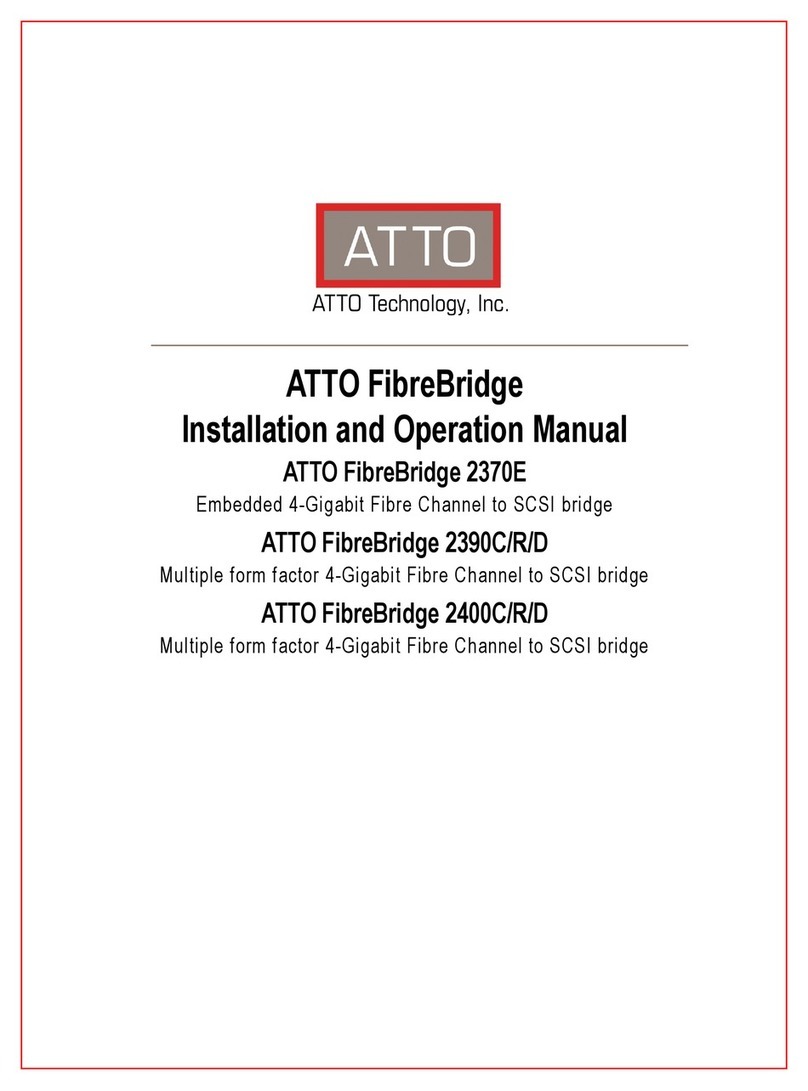
ATTO Technology
ATTO Technology FibreBridge 2370E Installation and operation manual
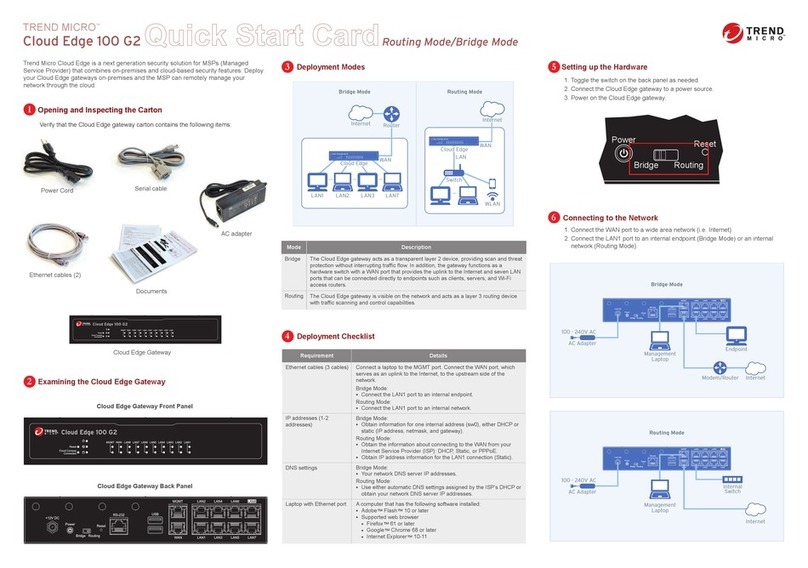
Trend Micro
Trend Micro Cloud Edge 100 G2 Quick start card
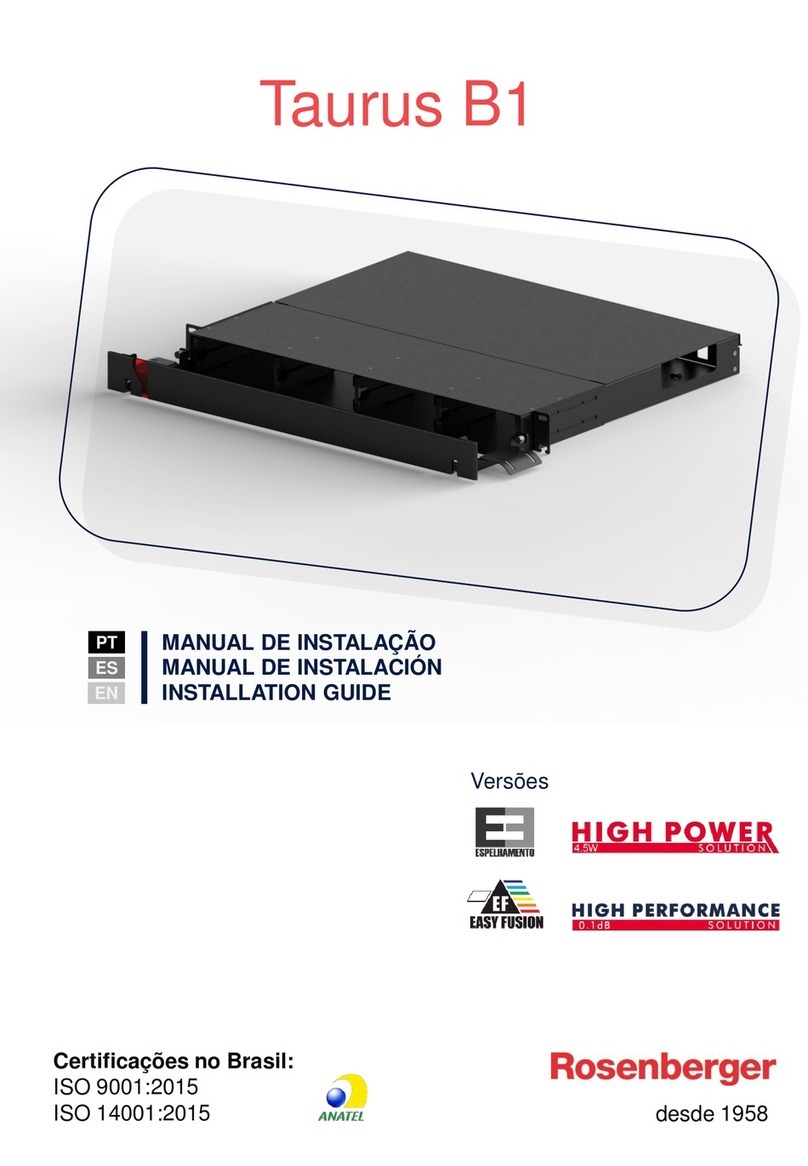
Rosenberg
Rosenberg Taurus B1 installation guide

Viking
Viking TR-1 Application note

HeimVision
HeimVision HM243 user manual

Zte
Zte ZXA10 C320 Hardware description
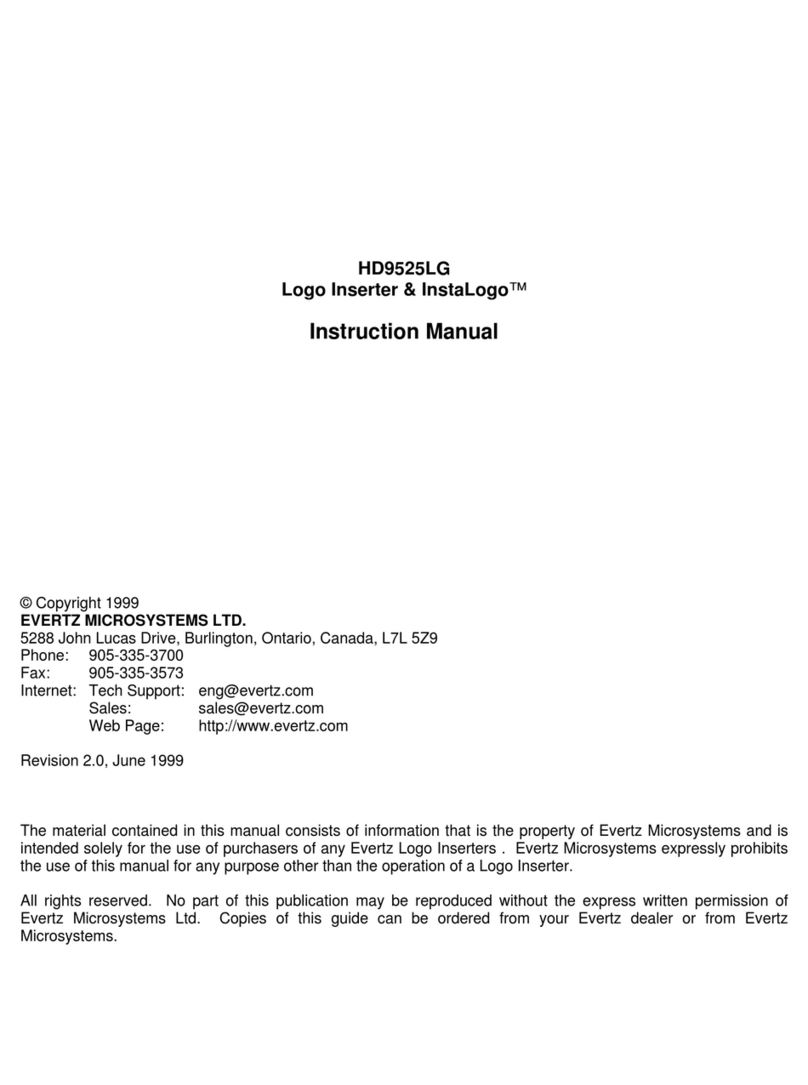
evertz
evertz HD9525LG instruction manual
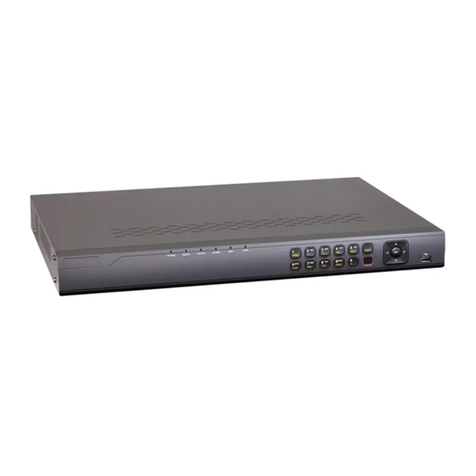
Monoprice
Monoprice NVR user manual

ubiquoss
ubiquoss U9264H GE-PON installation guide
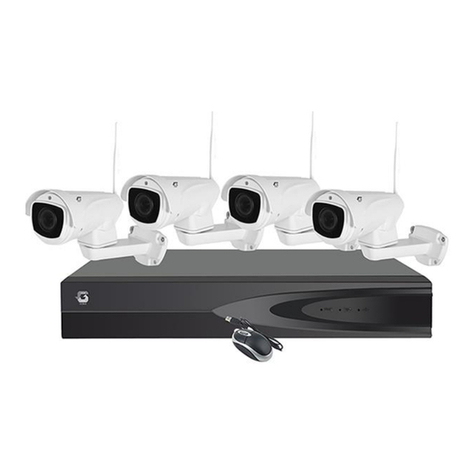
GLOBAL Export Import
GLOBAL Export Import MN8805G5 Basic operation

Planet Networking & Communication
Planet Networking & Communication GPN-100 user manual
